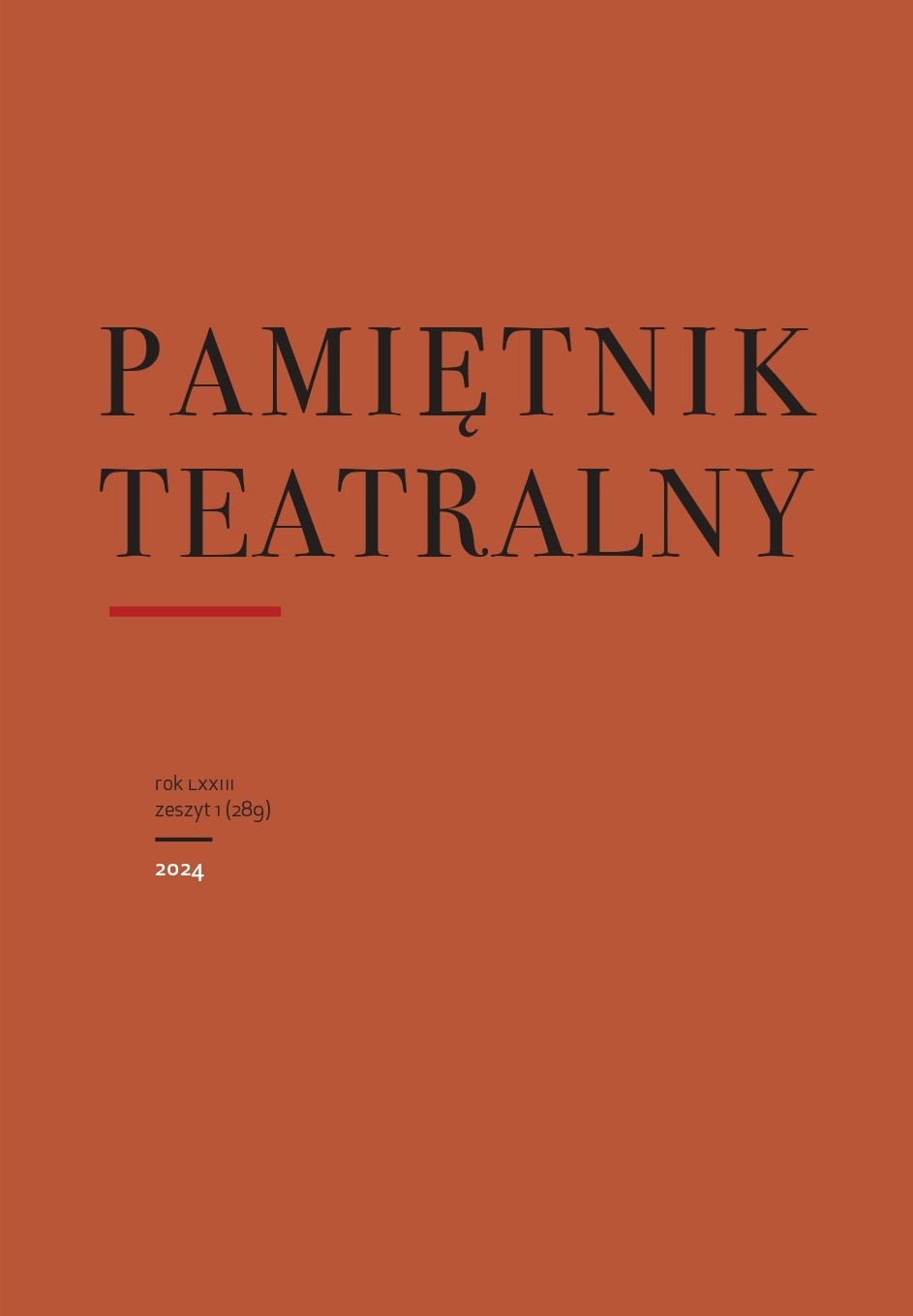To Escape the Anthropocene (in the Company of Spiders, Monarchs, and Digital Technologies)
Małgorzata Sugiera
malgorzata.sugiera@uj.edu.plJagiellonian University in Kraków (Poland)
https://orcid.org/0000-0003-4953-2422
Abstract
In this article, the author looks closely at two arthropod species which Donna Haraway sees as playing an important role in accelerating the longed-for end of the Anthropocene. One of them is the Californian spider Pimoa cthulu, whose generic name she has slightly changed to better emphasize the chthonic dimension of the coming Chthulucene. The other one is Danaus plexippus, the monarch butterfly or simply monarch, the protagonist of her speculative fabulation “Camille Stories”, published in Staying with Trouble (2016). Two artworks stand at the center of the author’s interest: the video Ride the Wind and Draw a Line (1973) by the Japanese artist Fujiko Nakaya, which became a key-element in her retrospective Nebel Leben in Munich’s Haus der Kunst (2022) and the digital project and immersive installation Methuselah by the Cuban artist Reynier Leyva Novo, exhibited in New York’s Museo del Barrio (2023). Their comparative analysis opens a new perspective to showcase an emerging zone of contact which Eduardo Kohn calls more-than-human anthropology and Bernard Stiegler – neganthropology. Based on this comparison, the article also demonstrates the performative affordances of digital technologies, which in the two projects become therapeutic tools of care within more-than-human relationalities.
Supporting Agencies
Keywords:
Anthropocene, animal Other, performative arts, Neganthropocene, Bernard Stiegler, Fujiko Nakaya, Reynier Leyva Novo, care-full thinkingReferences
Barad, Karen. „Nature’s Queer Performativity”. Kvinder, Køn & Forskning, no. 1/2 (2012): 25–53. https://doi.org/10.7146/kkf.v0i1-2.28067.
DOI: https://doi.org/10.7146/kkf.v0i1-2.28067
Google Scholar
Chaudhuri, Una. „Introduction: Animals Act for Changing Times, 2.0; A Field Guide to Interspecies Performance”. In Animal Acts: Performing Species Today, edited by Una Chaudhuri and Holly Hughes, 1–12. Ann Arbor: University of Michigan Press, 2014. https://www.jstor.org/stable/j.ctvnjbfn0.3.
Google Scholar
Garrard, Greg. „Worlds Without Us: Some Types of Disanthropy”. SubStance 41, no. 1 (2012): 40–60.
DOI: https://doi.org/10.1353/sub.2012.0001
Google Scholar
Haraway, Donna J. „The Camille Stories: Children of Compost”. In Staying with the Trouble: Making Kin in the Chthulucene, 134–168. Durham: Duke University Press, 2016.
DOI: https://doi.org/10.2307/j.ctv11cw25q.13
Google Scholar
Haraway, Donna J. „Playing String Figures with Companion Species”. In Staying with the Trouble, 9–29.
Google Scholar
Lenton, Timothy M., and Bruno Latour. „Gaia 2.0: Could Humans Add Some Level of Self-awareness to Earth’s Self-regulation?”. Science 361, no. 6407 (2018): 1066–1068. https://www.science.org/doi/10.1126/science.aau0427.
DOI: https://doi.org/10.1126/science.aau0427
Google Scholar
Milevska, Suzana. „From a Bat’s Point of View”. In Eduardo Kac: Telepresence, Biotelematics, and Transgenic Art, edited by Peter T. Dobrila and Aleksandra Kostic, 47–52. Maribor: Association for Culture and Education Kibla Kibla, 2000.
Google Scholar
Nagel, Thomas. „Jak to jest być nietoperzem?”. Tłumaczenie Adam Romaniuk. Przegląd Filozoficzny 5, nr 1 (1996): 129–141.
Google Scholar
Puig de la Bellacasa, María. Matters of Care: Speculative Ethics in More than Human Worlds. Minneapolis: University of Minnesota Press, 2017.
DOI: https://doi.org/10.1017/S2753906700002096
Google Scholar
Stiegler, Bernard. The Neganthropocene. Edited and translated by Daniel Ross. London: Open Humanities Press, 2018. https://www.openhumanitiespress.org/books/titles/the-neganthropocene.
Google Scholar
Wolfe, Cary. „From Dead Meat to Glow-in-the-Dark Bunnies: Seeing ‘the Animal Question’ in Contemporary Art”. In What Is Posthumanism?, 145–168. Minneapolis: University of Minnesota Press, 2010.
DOI: https://doi.org/10.1515/9781438425955-009
Google Scholar
Yusoff, Kathryn. A Billion Black Anthropocenes or None. Minneapolis: University of Minnesota Press, 2018.
DOI: https://doi.org/10.5749/9781452962054
Google Scholar
Authors
Małgorzata Sugieramalgorzata.sugiera@uj.edu.pl
Jagiellonian University in Kraków Poland
https://orcid.org/0000-0003-4953-2422
Małgorzata Sugiera - Prof. Dr., Honorary Professor at the Jagiellonian University and Head of the Department of Performatics at the Faculty of Polish Studies of the Jagiellonian University. Scholarship holder of the Alexander von Humboldt Stiftung, DAAD, Andrew Mellon Foundation at the American Academy in Rome and the Institute for Advanced Studies in the Humanities at the University of Edinburgh (IASH), Rhône-Alpes Region and IRC ‘Interweaving Performance Cultures’ at the Freie Universität in Berlin. She has taught at German, Swiss, French, Chinese and Brazilian universities. Her research interests include performative theories and practices, decolonial studies and ecological speculative fabulations
Statistics
Abstract views: 385PDF downloads: 250
License
Copyright (c) 2024 Małgorzata Sugiera

This work is licensed under a Creative Commons Attribution 4.0 International License.
The author grants a royalty-free nonexclusive license (CC BY 4.0) to use the article in Pamiętnik Teatralny, retains full copyright, and agrees to identify the work as first having been published in Pamiętnik Teatralny should it be published or used again (download licence agreement). By submitting an article the author agrees to make it available under CC BY 4.0 license.
From issue 1/2018 to 3/2022 all articles were published under a Creative Commons license CC BY-NC-ND 4.0. During this period the authors granted a royalty-free nonexclusive license (CC BY-ND 4.0) to use their article in Pamiętnik Teatralny, retained full copyright, and agreed to identify the work as first having been published in our journal should it be published or used again.
Most read articles by the same author(s)
- Małgorzata Sugiera, Performativity as an Attitude/Perspective: Introduction , Pamiętnik Teatralny: Vol. 71 No. 4 (2022): Performativity (with essay cluster curated by Małgorzata Sugiera)









